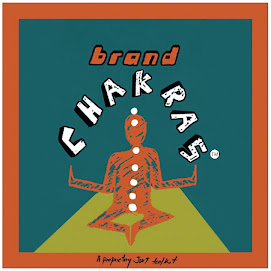This first appeared as an article in The Brand Wagon, The Financial Expresss, August 5th, 2008
Survival, Pleasure, Power, Love, Creative Expression, Transcendence, Spirituality: these are the seven basic life themes - based on the seven major chakras in the human body - that drive all human behaviour.
Sahasara or the Crown Chakra is about enlightenment, wholesomeness, positive transformation, inner peace, enthusiasm and fulfillment. The seat of psychological maturity, it is said to develop when we face difficult choices in our personal lives and external challenges. The Brand Chakras framework calls this life space “Surrender to Spirituality: Mental and Intuitive Intelligence”. It does not require as was thought in earlier days, renunciation of the world. Rather it is about being aware of a higher force at work, balancing worldly pursuits and spiritual thinking, remaining grounded, and even healing and transforming others around us.
Strong crown chakra people have a clear idea of who they are and what they want to do, have no illusions about life, like to do things flawlessly, stay peaceful in any situation, and are in general, satisfied with their present life. Their strategies in life include acknowledging an inner voice, cultivating humility, disciplined living, an ability to tone down expectations and a willingness to put others before self. As a result they seek or experience a higher quality of living and being.
The classic crown chakra archetype is the guru, while the negative archetype within the same space is the egotist – excessive crown chakra can manifest as egotism, superiority, overly intellectual, intolerance of the spiritually immature, self denial or superstitiousness.
Traditionally religious and ritualistic, India of course became the spiritual fountainhead in many ways to the materialistic West. While in India we now have magazine cover headlines that say “Tango with God” and ads like the recent one of Tata Sky ad that takes a light hearted dig at spiritual channels and people who watch them. Advertising, in general has used spirituality in a lighter vein, or to strike an emotional chord - like the Reliance mobile ad in which the young lady connects with her grandmother by calling her so that she can hear the temple bell. The third type can be found more in serials and films - the fake guru or purohit, who every now and then, makes newspaper headline too. The endless scenes of prayer in our soaps, and the villains’ disregard for rituals underlines the Indian concept of “good people are religious and bad people are not”.
The larger point in India today is of course that spirituality has actually merged with day-to-day physical and mental health, and a search for achievement and realising potential as against a search for divine truth. The focus is on a greater sense of what we are capable of and a search or realization of what our individual higher purpose might be – and this is indeed a Spirituality Chakra focus.
Brands – or products and services - wanting to offer Sahasara payoffs can explore payoffs like: helps me to face life with equanimity; helps me to reach the divine; helps me achieve my potential; helps me to get my inspiration from within; helps me to resist pleasure. Brands that offer enlightenment, self realisation, actualisation, perfection, inner peace and infinfite enthusiasm, emotional healing and positive transformation will fall into this space.
The best examples of Spitiruality Chakra offerings would be books – from Deepak Chopra to Neale Donald Walsch to Rhonda Bryne, even Stephen Covey and Jonh Maxwell in their own ways. And a hundred others in between. Life skill courses, religious channels and magazines, and of course mythological serials and movies, all offer Sahasara payoffs. Holiday brands and spas too offer shades of equanimity, relaxation and peace, though not enlightenment.
The implication that emerges is: as brands proliferate should we be asking deeper questions of our brands to help differentiate? Each of us could ask of our brands questions like: Is there anything about the brand that seeks to connect with our soul? Does the brand have a spiritual quotient? Any possibility of a nobler association? Can associating with this brand bring about any transformation in our lives? Does the brand believe it has a larger mission beyond its apparent functionality or the more traditional “emotional benefit”? Given that stress is increasing in a hundred ways, can brands help to face life with equanimity? Given that all Indians are seeking to raise the bar on achievement, one way or the other, can brands help us to achieve our potential? Inspire from within? Help bring about transformation in the world around us?
Given that India is at heart a highly spiritual nation, have brands explored this space enough?




